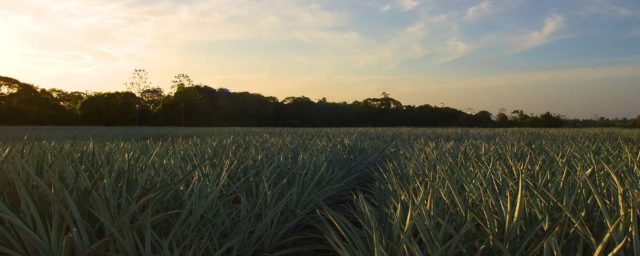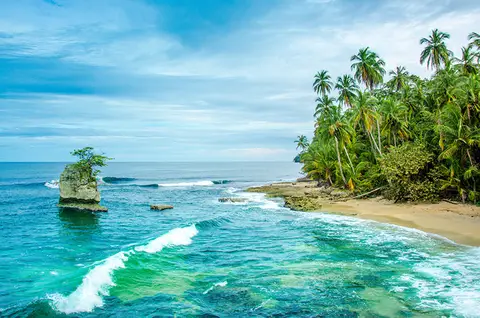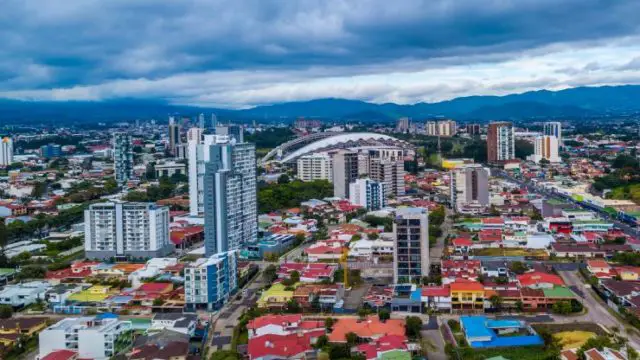
Costa Rica’s economy primarily depends on tourism, agriculture and the export of electronic equipment and services. The country significantly reduced poverty during the thirty years between 1950 and 1980, thanks to a strong impulse by the State towards the productive processes for the external and internal markets, as well as to the development of a strong social investment in education, health, electricity, telecommunications and provision of basic services; among others.
Currently, the Costa Rican economy is based on a mixed and quite diversified structure. It’s export revenues from traditional agricultural products, such as bananas, coffee, sugar, cocoa, and pineapple, remain important.
Highlighted is the production of high-quality Costa Rican coffee and its export to the US and European markets where it is highly appreciated. However, the income from the export of non-traditional products – such as flowers and vegetables – has greatly exceeded the previous ones and the service sector has grown strongly in recent years, generating more than 10,000 jobs.

Tourism is the fastest growing industry and since the beginning of the 2000’s it generates more currencies than any of the main agricultural export products. Tourism is thriving within the main components of the Costa Rican economy. An increase in hotels, taxis, guides and other tourism services have appeared since the early 1990s. Bilingual schools have been founded to provide essential English training to serve foreign visitors.
Costa Rica has sought to expand its economic and commercial ties, both inside and outside the region. Due to its peaceful environment, the high educational level of its inhabitants and adequate policies to stimulate companies, the country began in the mid-1990s the production of materials, technological products, and microtechnology.
The medical supplies production industry became the main export product of Costa Rica, reaching $ 2.2 billion in 2015 and has since experienced a growth of 20%, displacing the microprocessor electronic components producing sector and the pineapple crop exports. The sector employs 20,000 people, 55% women.
Costa Rica is a country that many multinationals like to seat their headquarters or service delegations within the region, which creates jobs, highlighting Amazon, Procter & Gamble, Intel, Smith & Nephew, Bridgestone, Coca-Cola, Hewlett -Packard, Sykes, Sony, DHL, Cisco Systems, GlaxoSmithKline, Pfizer, Western Union, Baxter, IBM, Oracle, Walmart, Kimberly Clark, Cargill, Emerson Electric, Dole, VMware.
Ecotourism is extremely popular among foreign tourists who visit the many numbers of national parks and protected natural areas that exist throughout the country. Costa Rica was one of the pioneers in ecotourism worldwide and is recognized as one of the few international destinations with true ecological tourism options.
In the classification of the Competitiveness Index in Travel and Tourism of 2018, Costa Rica reached the 40th place, being the first classified among Latin American countries. The competitive advantages to develop tourism ventures are in the area of human, cultural and natural resources, in which Costa Rica is ranked 22nd worldwide, and ranks seventh when only the natural resources factor is considered.
With revenues of US $ 2 billion a year, the tourism industry in Costa Rica stands out as the most visited destination in Central America, with a total of 2.5 million foreign tourists in 2018. With 490 visitors per thousand inhabitants, Costa Rica has one of the highest tourist rates of any nation.
The majority of foreign visitors come from the United States and Canada; tourism contributed 9% of the country’s GDP, and represents 15% of direct and indirect jobs. Since the beginning of this century, tourism generates more foreign exchange income for the country than the export of bananas and coffee together.
Challenges still ahead.

Costa Rica to maintain its economic growth must continue to attract investment and its competitiveness lies in gearing up the infrastructure in all areas. The country has an infrastructural lag of more than 25 years, and much of the public infrastructure that exists, main bridges, is in a state of vulnerability.
The capacity of the country’s main international airports, Juan Santamaría in San José and Daniel Oduber Quirós in Liberia, have been overcome by the growing demand of passengers due to the tourism boom. The capacity of the ports has also proved very insufficient to keep pace with the growth of maritime trade, including equipment generally in poor condition. The rail system has not been viable since 1994, except for the urban train in San José and a few lines reactivated by banana companies with US capital, in the Caribbean area.

